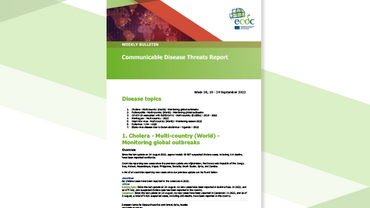Gap analysis on securing diphtheria diagnostic capacity and diphtheria antitoxin availability in the EU/EEA
The findings from this gap analysis are essential to public health management and the implications for diseases caused by toxigenic corynebacteria in Europe and will have an impact on mechanisms for diagnostics and management.
Executive summary
This gap analysis demonstrated that there are significant gaps in diphtheria diagnostic capacity within the EU/EEA, with only six Member States fulfilling the minimum criteria in terms of surveillance, specialised laboratory diagnostics and expertise.The areas with the greatest gaps are related to training and surveillance of all three potentially toxigenic corynebacteria - Corynebacterium diphtheriae, C. ulcerans and C. pseudotuberculosis. The following areas were highlighted as requiring further action.
- Surveillance systems should be in place for the three pathogens, with appropriate methods to determine toxigenicity;
- EU diagnostic capability should be enhanced to isolate, detect toxigenicity, and undertake molecular characterisation of the above pathogens. Consequently there is also an urgent need for a laboratory training workshop, especially for ‘newer’ EU Member States;
- The availability of updated guidelines (national and WHO) [20] on laboratory diagnosis of diphtheria and other related infections caused by potentially toxigenic corynebacteria should be considered a priority;
- Risks relating to the lack of EU availability and procurement of diphtheria antitoxin (DAT) should be addressed.
Download







